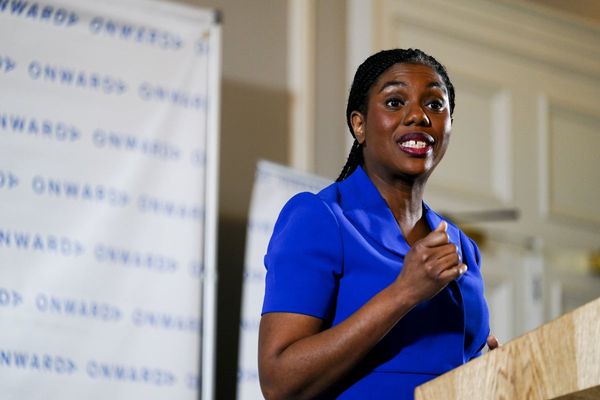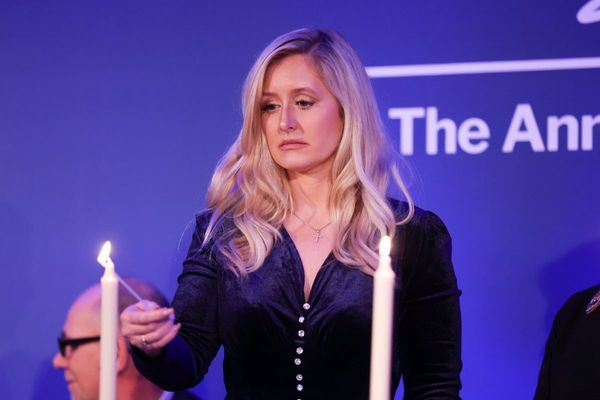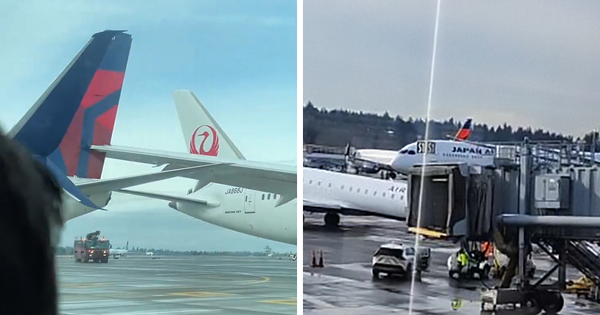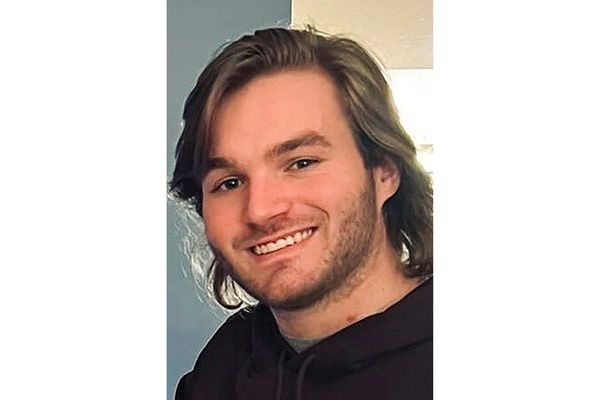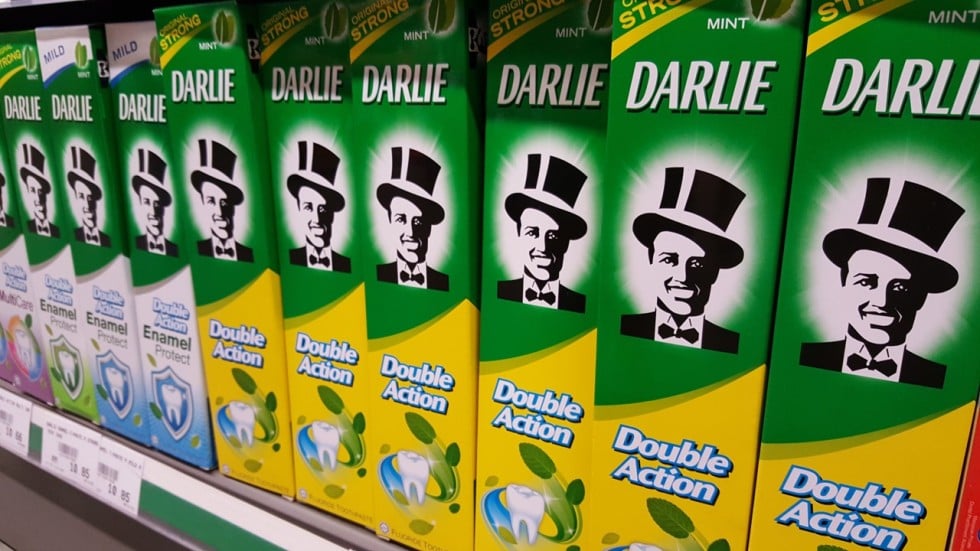
When US television host Megyn Kelly defended blackface Halloween costumes on her new daytime NBC show, the backlash was swift and strong. She was fired within a week. For many, blackface is a reminder of how black people around the world have been oppressed and marginalised for centuries.
You don’t need to look far to find examples. Walk into any supermarket in Hong Kong, Bangkok or Shanghai – although it may not be obvious at first, one of the Asia’s bestselling brands of toothpaste has deep roots in blackface.
How a Japanese health drink conquered world with bacteria and beaming ladies
In a sea of products with slick packaging designed to evoke minty freshness, Darlie stands out on the shelves for its vaguely retro branding, marked by a black-and-white logo of a man wearing a top hat and a broad smile – the Darlie Man, as he is officially known.
It’s the bestselling toothpaste in China, and in Taiwan, Hong Kong, Malaysia, Singapore and Thailand, “we are either in first or second place for the sale of toothpaste, and our market share ranges from 10 to 30 per cent in these markets”, says David Chiu, regional marketing director for Darlie.
So far, so innocuous. But if you look closely at the box you’ll notice something unusual: Darlie’s Chinese name translates as “black person toothpaste”. It’s a remnant of a time not too long ago when Darlie was known in English as Darkie, and the Darlie Man was a grinning blackface minstrel.
Kelley Loper, director of the University of Hong Kong’s Centre for Comparative and Public Law, remembers visiting Taiwan in the 1990s and coming across some boxes of Darkie in a local grocery store.
“I remember being really shocked and offended,” she says. “But then I discussed it with friends in Taiwan and they didn’t understand what the problem was.”
So how did a toothpaste with a name and logo that many consider to be deeply, irredeemably offensive become so popular in Asia? And what does its continued success say about the state of racism and race relations today?
To answer those questions, you need to go back 85 years to Shanghai, where the Niem family established the Hawley & Hazel Chemical Company. One of its products was a toothpaste that promised to give its users dazzlingly white teeth.
Its branding played on the imagery of performers such as Al Jolson, who painted their faces black to perform in minstrel shows that ridiculed people of African descent.
“Darkie” was a racial slur used against African-Americans in the Jim Crow era, when large parts of the United States were governed by apartheid-style racial segregation. “It doesn’t have the same implications as the N-word, but it’s not far off,” says Barry Sautman, a visiting professor at the Hong Kong University of Science and Technology who specialises in ethnicity in China and Africa-China relations.
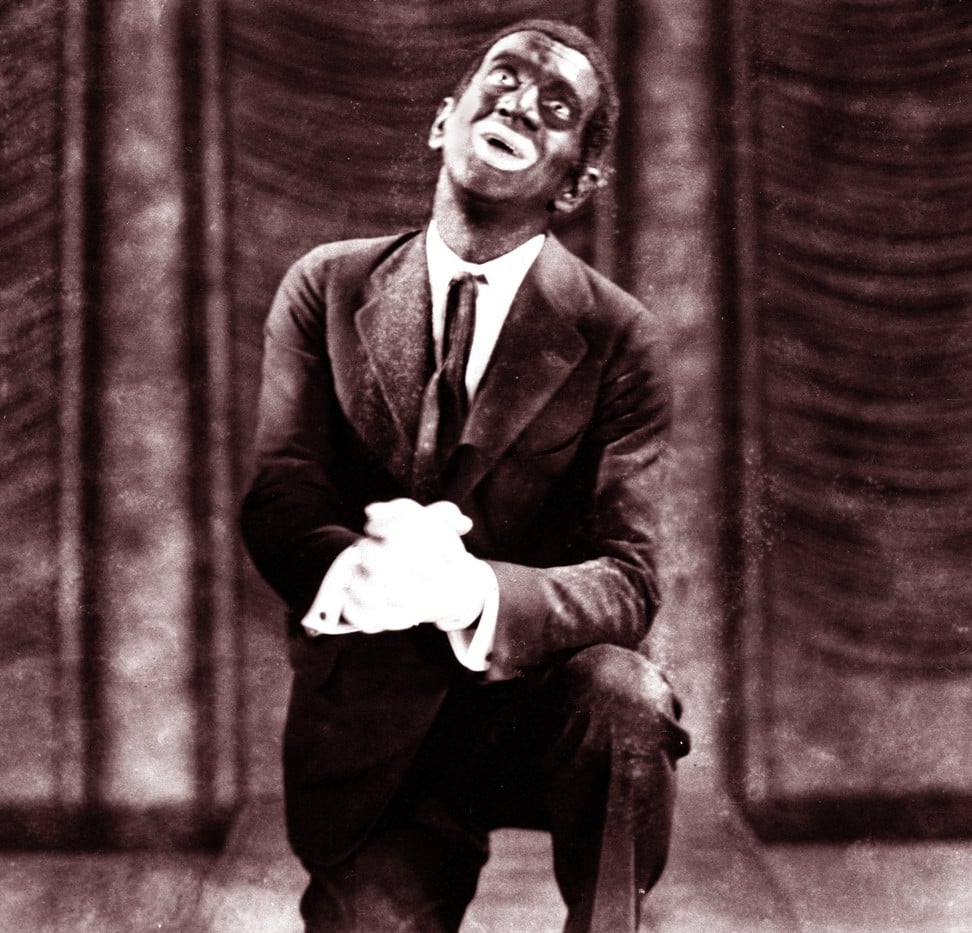
“Blackface is part of a history of dehumanisation, of denied citizenship, and of efforts to excuse and justify state violence,” wrote American race studies professor David Leonard in a 2012 essay.
Because blackface depicts people of African descent as less than human, it helped justify horrific acts such as lynchings, and Leonard says it continues to serve as a justification for segregation and mass incarceration.
There have historically been Africans in East Asia, and Sautman says he doesn’t see much of a history of anti-black sentiment in China. But Asia nonetheless imported Western ideas of race in the early 20th century, which placed black people at the bottom of the hierarchy.

“Chinese people basically had no conception of black people other than what they imported from the West,” he says. “This is still often the case in terms of how Chinese think about Africa and Africans.”
Blackface characters had one thing in common: dazzling white teeth. “Because their skin was so dark, their teeth looked really white – so people associated them with white teeth,” says Michele Fan, a Hong Kong-born marketing strategist now based in the United States.
In a decade when blackface imagery was widespread, it’s easy to see how Hawley & Hazel got its inspiration for the Darkie brand.
The Niem family moved the business from Shanghai to Taipei in 1949, after the communist victory, and then to Hong Kong in 1973. Darkie continued to enjoy success throughout Asia, earning a 75 per cent market share in Taiwan and 50 per cent in Singapore, which drew the attention of Colgate-Palmolive, the brand’s largest competitor. In 1985, the New York-based multinational struck a deal to acquire 50 per cent of Hawley & Hazel.
It was a savvy business move, earning Colgate a near-monopoly in Asian markets, but from the beginning the company was aware of the political implications of owning a brand named Darkie. When word spread to the United States of Colgate’s acquisition, American racial justice groups and Democratic politicians began lobbying for a boycott. Even Colgate’s then-CEO, Reuben Mark, acknowledged the brand was racist. “It’s just plain wrong,” he said in 1989. “It’s just offensive. The morally right thing dictated that we must change.”
But Colgate was loath to harm a brand that was a proven success, so its first steps towards change were tentative. In 1987, it ran a six-month test in Singapore by changing Darkie’s name to Dakkie, without removing the blackface logo. Two years later, the company settled on the name Darlie, and it redrew the logo to represent today’s more racially ambiguous Darlie Man.

One thing didn’t change, though: the brand’s Chinese name. As a 1990 Cantonese-language television commercial made clear: “Black Person Toothpaste is still Black Person Toothpaste.”
The controversy receded and Darlie continued to thrive, rolling out green tea and jasmine-flavoured toothpaste that further cemented its success in Asian markets.
“I think where it’s really successful and why it’s successful is because of the legacy and the heritage of the brand,” says Singapore-based brand consultant Martin Roll. “If you take a step back and look at a modern retail shelf, it stands out in terms of its logo, its colour, its name, its entire appearance. It comes across with a completely different identity.”
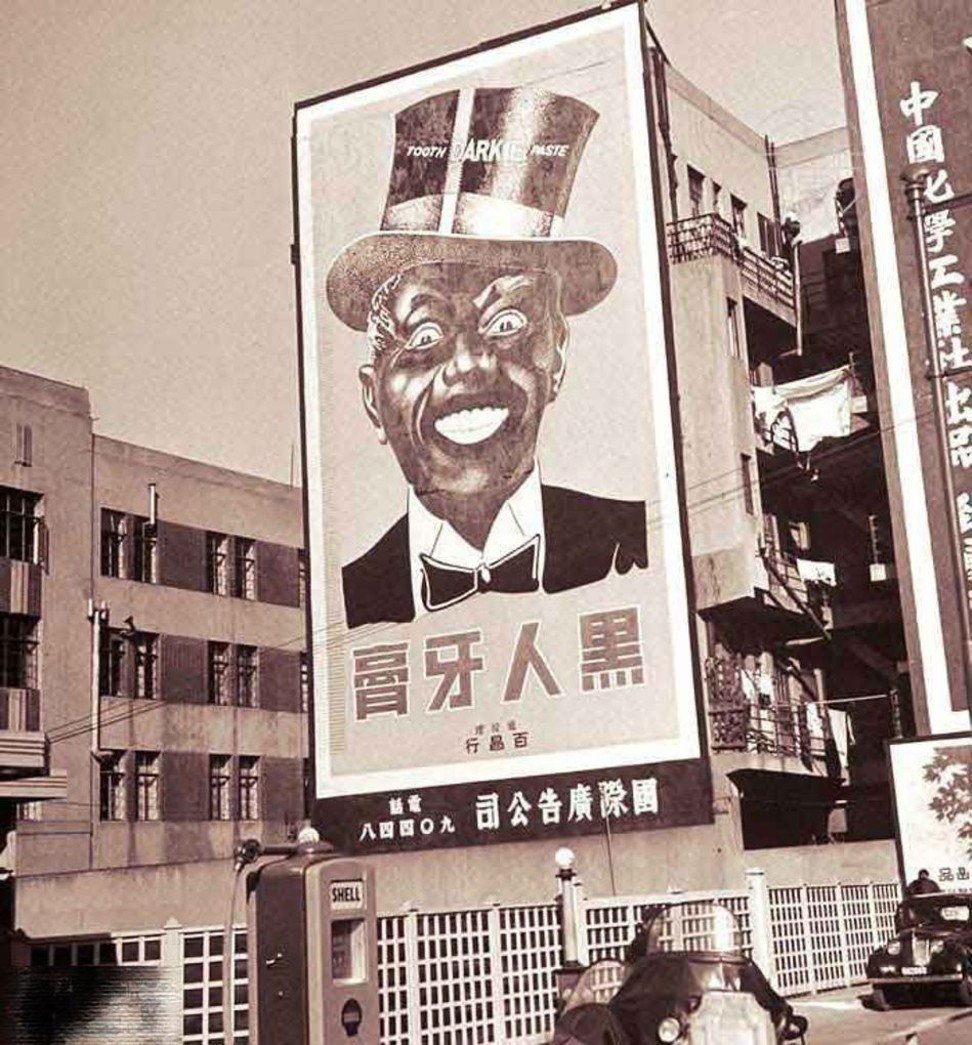
Michele Fan grew up using Darlie and, although she remembers finding its name a bit strange, she says it was simply part of Hong Kong’s retail landscape. “It’s something everyone uses,” she says.
The rebranding seems to have mostly succeeded in removing anything overtly offensive about the toothpaste. Caribbean-American researcher Darah Phillip lived in Hong Kong for two years, but she never noticed anything amiss about Darlie. “I’m glad they changed the logo to be more [politically correct],” she says.
Others are less sanguine. When asked about Darlie, members of the Hong Kong African Association say they are disappointed in the brand.
White Flower oil: 91 years of going from scents to strength
“My simple answer is ignorance,” says Eboh Manuel Chinuzo, who laments that many Hongkongers are oblivious to anti-black racism, whether on a global level or in Hong Kong, whose small African community deals with issues such as housing discrimination.
Another member of the association, Ezeakunne Sylvester, says Darlie’s history still stings. “A white man in blackface means someone with a bad heart,” he says. “Every bad thing is black but good ones are white. That is the racism we blacks are facing.”
Phyllis Cheung, director of anti-discrimination group Hong Kong Unison, says that while Darlie’s Chinese name is not intrinsically offensive, it still contains the seeds of racial stereotyping.
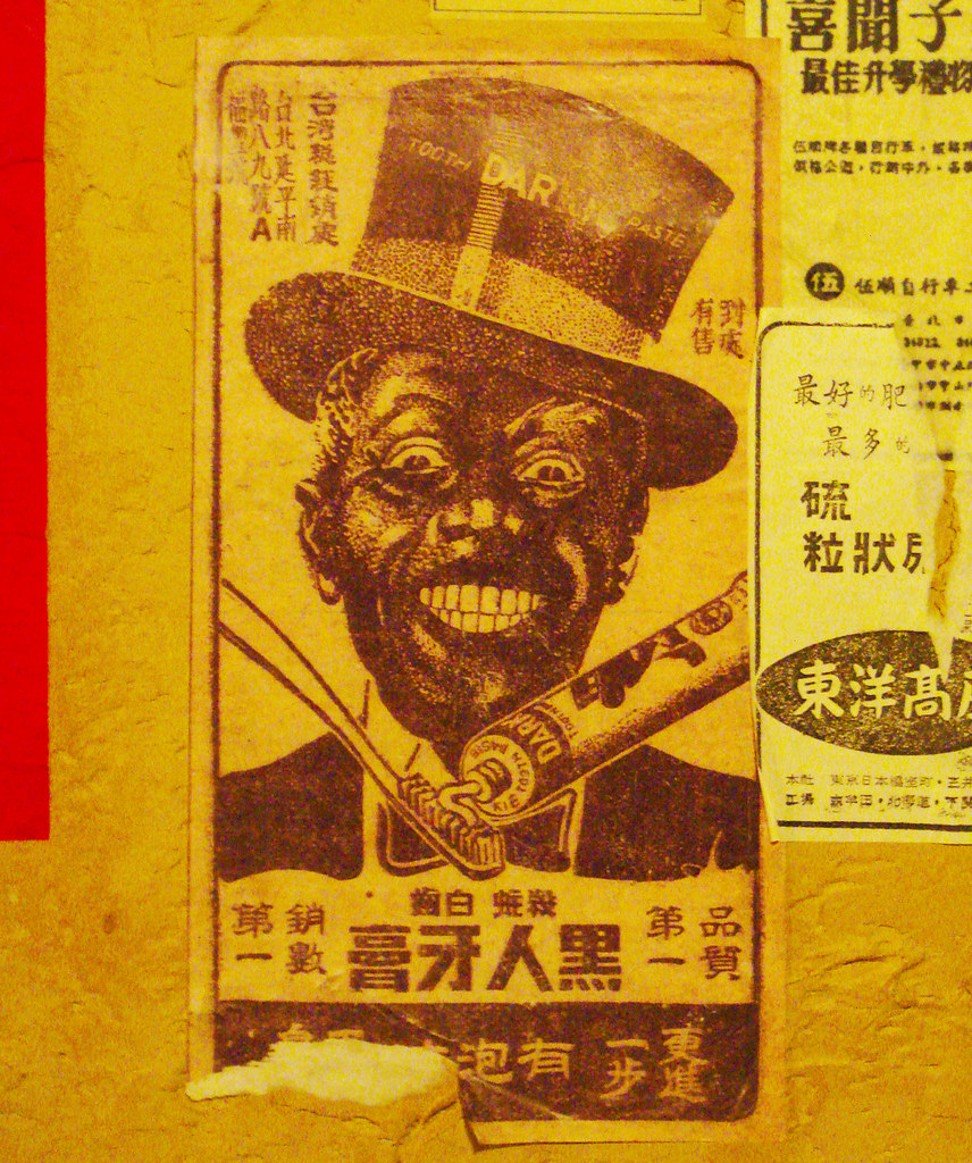
“Hong Kong people may not be aware of Darlie’s old image and what it means, since they may not know much about the history of slavery and violence against black people, how offensive blackface is, the pain all this has caused, and the systemic oppression black people are still facing,” she says.
“While Darlie’s image is now a racially ambiguous man, its Chinese name is a reminder that it has not made a complete break from its previous racist branding.”
Darlie’s Chiu acknowledges that the toothpaste’s original branding was “derogatory”, but he says it has moved on from that history. “There has been no change to the Chinese name as Chinese consumers have told us our brand is perceived as trustworthy, international, modern and premium,” he says.
Story behind world’s top energy drink: how Thailand created Red Bull
“The direct translations of the Chinese brand name to English terms ‘Black Man’ or ‘Black Person’ are not the best representation of our intent, and they may lead towards a different connotation due to cultural differences.”
With its troublesome past well hidden, don’t expect Darlie to change any time soon. “We are very proud and thankful that the consumers recognise Darlie and like our product,” says Chiu. “We focus not only on delivering the best possible products to our consumers, but also on inspiring them to express their best selves with a bright white smile, whenever and wherever they are.”

